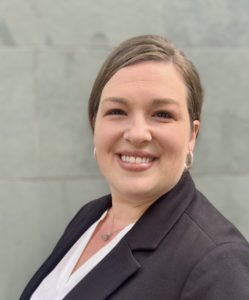How to Use Goals to Improve Resident Health and Happiness

Nena Hart, MSN RN, CHPN, RAC-CT, C-DONA, owner and executive consultant, Hart Healthcare Solutions
Goals are an essential and daily part of running a senior care facility, and they can be powerful change motivators. But for goal setting to truly improve aspects of your facility, including resident health and happiness, it needs to be deliberate and measured, and staff need to be invested in the goals. Careful goal setting can help to facilitate change, unite staff, and improve your facility’s performance.
The Benefits of Goal Setting in Senior Care Facilities
Setting goals can provide facilities with many benefits. Nena Hart, MSN RN, CHPN, RAC-CT, C-DONA, owner and executive consultant at Hart Healthcare Solutions, explains that she has seen goal setting generate an improved overall morale in leadership teams. “Those teams have a clear, shared, unified vision that everyone is working toward,” she says. “When there’s a clear goal, everyone’s working in unison, and it’s much more efficient.” Having that goal creates a positive feeling and is less chaotic, and goals help to unify and focus the leadership team.
Hart also highlights the fact that goals have significant implications for resident wellbeing, as well as for compliance and reimbursement. “Setting goals is a great way to improve the overall quality of care and outcomes for compliance,” she says.
Determining Goals for Your Senior Care Facility

Scott Sutherland, vice president of operations, Servi-Tek Facility Solutions
In many cases, appropriate goals are facility-specific, but there are some goals that are ideal for any facility.
Scott Sutherland, vice president of operations of Servi-Tek Facility Solutions, highlights the importance of setting goals around dedicated facility maintenance. “Lack of professional maintenance can contribute to accidents like falls, risk of injury due to equipment failure, and health risks related to poor indoor air quality, surface and air virus transmission, and cleanliness and hygiene issues.”
He suggests that facilities incorporate a maintenance-focused approach to prioritize residents’ safety and health. Establishing cleanliness and surface disinfection goals and HVAC and other equipment maintenance goals allows facilities to address some of the essential maintenance that can easily go overlooked.
When developing goals, Hart often sets goals with her teams based on round-table input from leadership. She also uses quality indicators from available reports. She notes that CASPER and PEPPER reports contain the areas that CMS monitors for quality standards. Hart suggests monitoring complaints and grievances; if trends keep resurfacing, the facility can set a goal around that area.
Dr. Eboni Green, PhD, faculty member in Walden University’s Doctor of Healthcare Administration Program, highlights the importance of maintaining a sense of achievement in goal setting. She notes that in long-term care organizations, there are so many regulations and competing interests that staff can sometimes feel like they’re not receiving the positive feedback that they might in other organizations, since they’re working with individuals who are sometimes at crisis points or end-of-life. “I think that it really benefits the team to first begin by identifying some things that they’re doing really well,” she says.
She also suggests that administrators identify an initial goal that they know can be easily achieved. “Success early on in the process of making change is very empowering for the staff and residents,” she says. “Then, build on those successes and identify another small goal. By the time you complete a couple of small goals, you will have then accomplished a larger goal and kept your staff involved because you’ve had successes to coalesce around.”
Strategies to Get Staff Personally Invested in Goals
Staff investment in goals is essential to their accomplishment. Hart recommends that facilities make sure that goals are fun and interesting, but it’s also important that they’re non-punitive. “Presentation is a lot of it,” she says. If a goal is delivered as a directive, it doesn’t motivate staff. “It needs to be really clear how we’ll achieve the goal, and that goal needs to come from the leadership team as a whole, and not just one supervisor talking to their subordinates.”
Tracking Progress and Celebrating Accomplishments
When it comes to tracking progress toward a goal, Hart recommends keeping the process as public as possible. Staff-specific goals can be tracked on a staff dashboard via email, or even using a free scoreboard app or paper thermometer. Goals involving residents could benefit from resident feedback and input about progress toward the goals. “Your residents will tell you honestly if you’re achieving your goal or not,” says Hart.
The best ways to celebrate accomplished goals will also depend on the goals, themselves. “Big goals should be celebrated in a big way,” says Hart. She suggests options like gift cards, big celebrations, and raffles.
Dr. Green also highlights the importance of the celebration being appropriate for the accomplishment. “There are some goals that you may work on, like employee retention, where monetary rewards for frontline staff and folks in the system are going to be what’s most meaningful,” she says.
She believes that the team, including frontline staff, should identify together the appropriate celebration for accomplishing the goal. “Sometimes a pizza party won’t be fulfilling for every staff member, but maybe there’s something else, like a 25-cent bonus for the last hours you worked, a type of drawing for a weekend or hotel giveaway, or some other option that’s more suitable.”
Learning From Unmet Goals
Even goals that aren’t yet accomplished provide valuable lessons. “Just because you don’t achieve a goal doesn’t mean it’s not a goal anymore,” says Hart. “It’s still a goal but it needs to be revisited.” Hart notes that an approach may not have been effective, a goal might not have been realistic, and even interventions might not have been right for the team or facility.
“Start asking questions about why it didn’t work. The more people you can include who were involved and engaged in that process who are not in leadership, the better. When we’re a leader evaluating our own plan, it seems great and looks like there’s nothing wrong with it. But when you ask someone not involved who will tell you the truth, they may tell you the goal was unrealistic, they didn’t feel involved, or they didn’t even know they were working toward that goal.” Hart suggests asking staff to complete an anonymous survey to gain details about their awareness of and participation in working toward the goal.
Keep in mind that goal setting is present in nearly everything you do. “Whether it’s surveys or COVID-19 or anything, incorporate goal setting into that automatically,” she advises. “It can be easy with staffing challenges and COVID-19 to lose goal setting because it seems like an extra time commitment, but remember that whether or not you’re intentional about it, you have goals in all of those areas.”

Paige Cerulli is a contributing writer to i Advance Senior Care.
Related Articles
Topics: Administration , Featured Articles , Leadership , Resident Care











